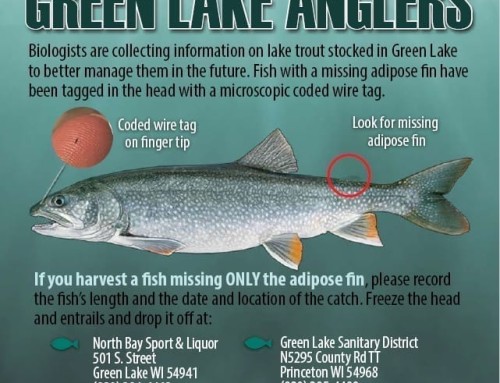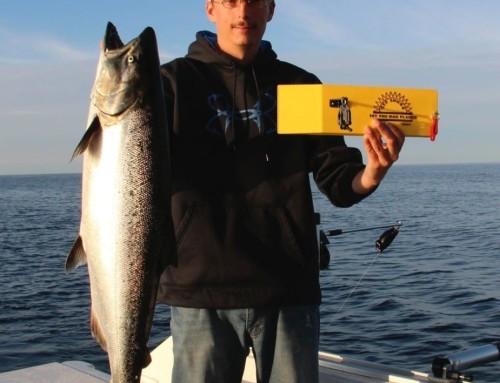Every fall, salmon return to the harbors of eastern Wisconsin on Lake Michigan to complete their cycle of life. A typical King Salmon, sometimes referred to as Chinooks, have a four and a half year life cycle for females (males have a shorter life expectancy). At the end of the life cycle, King salmon will commonly return to where they were hatched/released to performing their mating rituals, before dying.
Often these return areas are the Harbors along Wisconsin’s eastern shore such as Algoma, Kewaunee, Sheboygan or Port Washington to name a few. Generally in September, large numbers of these fish will move into the harbor and can be caught from the shore lines and piers.
The thrill of a king salmon screaming down the pier with a hook in its mouth, on light tackle is an exhilarating event. The massive fish, some going up to 30 pounds, have an energy and vigor which is unmatched with other great lakes fish. At times, they will leap out of the water, leaving anglers and spectators gasping.
Catching a King Salmon from a pier is a communal event. Once hooked up, the angler announces he has a “fish on.” It is now common courtesy by most anglers to reel in their lines to allow the angler to fight the fish. The king salmon will run, often in multiple directions, giving the angler a run for his money. This past week we had a fish run over 400 yards up the pier, passing 20 plus anglers along the way.
Netting of the fish can be difficult in some harbors, due to the height of the pier, exceeding 10 feet above the water line. Homemade nets are built to handle these locations, and other anglers are often called upon to help net. It sometimes takes a community to catch a salmon.
Eating quality of the salmon will vary, depending where they are in the spawning process. Once the fish completes spawn, the meat becomes less desirable for human consumption. Pre spawn, the meat is one of the most sought after game fish in the world.
Not only do these harbors become populated with Salmon; but also brown trout, rainbow trout and eventually Coho’s will become abundant. General the peak of the season starts in late August and concludes in March, with each species having a peak during that time frame. The 2014 season has been slow to develop, due to abnormally cold water conditions all season on Lake Michigan.
For many anglers, shore fishing is a second thought, after all boat options have been exhausted. For those sportsmen which do not have boats, this is some fantastic entertainment. This is also the perfect opportunity to introduce experienced youth to big fish.





